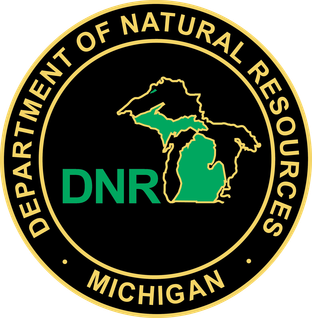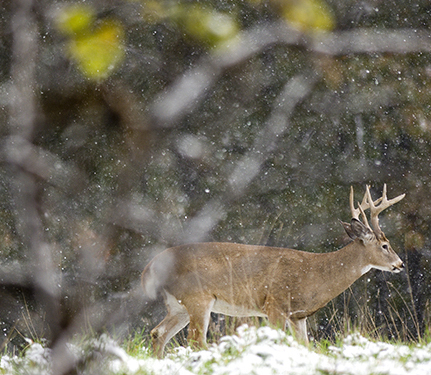Epizootic hemorrhagic disease confirmed in white-tailed deer in 11 southwest Michigan counties
Since early September, the Michigan Department of Natural Resources Wildlife Health Section has confirmed epizootic hemorrhagic disease, or EHD, in the wild deer population across 11 counties in southwest Michigan. The affected counties include Barry, Berrien, Branch, Calhoun, Cass, Hillsdale, Kalamazoo, Kent, Ottawa, St. Joseph and Van Buren.
EHD, a common viral disease that primarily affects white-tailed deer, is transmitted through the bite of an infected midge, or biting fly. Deer cannot transmit the disease directly to one another; the virus must pass through the insect. Outbreaks of EHD typically occur in late summer and early fall but cease with the first frost, which kills the midge population.
Infected deer exhibit symptoms such as loss of appetite, reduced fear of humans, weakness, excessive salivation, rapid pulse, increased respiration and fever. They may also seek out water to cool their elevated body temperatures. In severe cases, the disease leads to unconsciousness and death.
“EHD is not expected to have widespread deer population-level impacts, but it can significantly affect localized areas if mortality is severe,” said Chad Fedewa, acting deer specialist for the DNR Wildlife Division. “After an outbreak, local deer populations usually rebound after a few years. That has been the case over the last decade or so each time we have seen this virus show up.”
Report observations online
If you suspect you have found a deer that has contracted or died from EHD, please submit the observation through the DNR’s online reporting system, Eyes in the Field. In most cases, deer will be found in or near water.
Once confirmed in a county, it is not necessary to continue testing for the virus, but the DNR does encourage continued reporting of suspected cases online to track the full extent of the outbreak. To date, nearly 2,000 deer have been reported through the online form.
While EHD is sometimes fatal for deer, the disease poses no threat to human health. There is no evidence that humans can contract the virus from the midge, infected deer or venison. The edibility of venison is not affected by the disease, and pets and other wildlife are not at risk of contracting the disease.
Property owners are responsible for proper disposal of deer carcasses if they wish to remove them. Carcasses can be left to decompose naturally, be buried at sufficient depth so that no body parts are showing, or be removed and disposed of in an approved landfill that accepts household solid waste.
Although EHD has been found in several counties, its effects are usually not countywide. The disease typically affects deer in areas near water sources with exposed mud, which is where the midge fly lays its eggs. As a result, areas near some water sources may have severe mortality, but just a few miles away, where environmental conditions are different, deer will likely not be affected by the virus.
After a widespread EHD outbreak in 2012, local herds showed signs of rebounding after just a couple of years and were fully recovered after four to five years.
“The outbreak this year is the worst we’ve seen since 2012, but we expect a similar recovery to local deer numbers like we saw after the 2012 event,” added Fedewa. “So, while hunting and deer sightings will be affected in the short term, there are no long-term concerns with the overall deer population.”
For additional information about EHD, please visit the DNR’s epizootic hemorrhagic disease webpage.
Contact: Chad Fedewa, 517-930-4639




